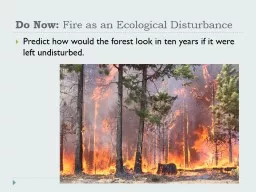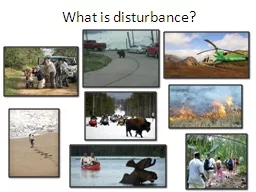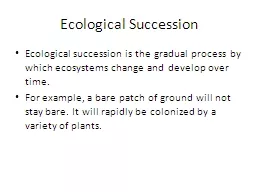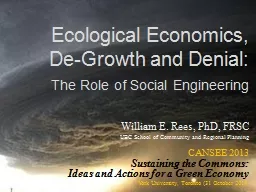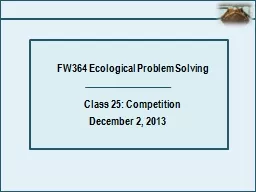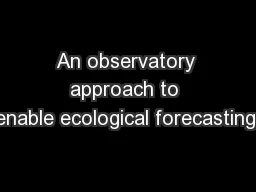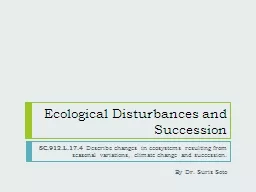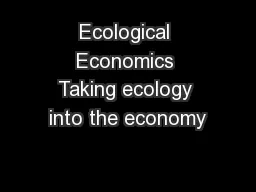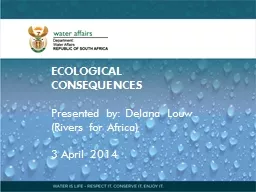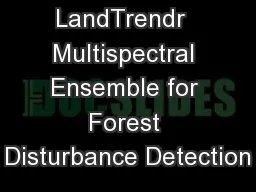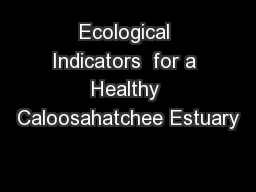PPT-Do Now: Fire as an Ecological Disturbance
Author : jane-oiler | Published Date : 2018-11-04
Predict how would the forest look in ten years if it were left undisturbed 62Ecological Disturbances and Succession SC912L174 Describe changes in ecosystems resulting
Presentation Embed Code
Download Presentation
Download Presentation The PPT/PDF document "Do Now: Fire as an Ecological Disturban..." is the property of its rightful owner. Permission is granted to download and print the materials on this website for personal, non-commercial use only, and to display it on your personal computer provided you do not modify the materials and that you retain all copyright notices contained in the materials. By downloading content from our website, you accept the terms of this agreement.
Do Now: Fire as an Ecological Disturbance: Transcript
Download Rules Of Document
"Do Now: Fire as an Ecological Disturbance"The content belongs to its owner. You may download and print it for personal use, without modification, and keep all copyright notices. By downloading, you agree to these terms.
Related Documents

